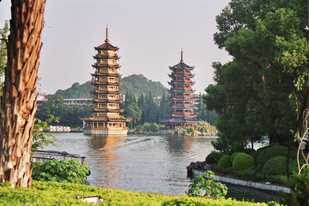17 Human Geography
Learning Outcomes
- Compare the differences between race and ethnicity.
- Describe where other language families are distributed.
- Explain why people preserve local languages and why languages around the planet are disappearing.
- Describe where religions originated and diffused around the world.
- Determine why territorial conflicts arise among religious groups.
Race and Ethnicity
WHAT IS RACE?
Race, in biological terms, refers to the concept and practice of categorizing people into groups based on shared physical characteristics resulting from genetic ancestry. Shared genetic ancestry is a result of geographical isolation. Geographic isolation, since the era of colonization and even before then, has significantly decreased in most areas of the world. Less geographic isolation results in the mixing of racial groups. Thus, classifying people by their race with any accuracy is difficult.
From a sociological perspective, race is a social construct. Many social scientists argue that race is a social construct and that the scientific basis for it is very weak because, as Larry Adelman (2003) argues, "most variation is within, not between, ‘races’: Of the small amount of total human variation, 84% exists within any local population. About 94% can be found within any continent" (p. 1). Race, in this sense, presumes real or assumed shared biology or genes and in 19th century, racial differences were used to justify colonization, racial inequities, immigration quotas, and slavery (in the U.S.).PBS has created an interesting website called RACE – The Power of an Illusion that looks at whether race truly is a biological characteristic of humans or a social construct.
WHAT IS ETHNICITY?
Ethnicity refers to a population of people whose members identify with each other based on real or presumed shared ancestry (shared cultural and historical past). Shared geography, language and religion can often, but not always, factor into ethnic group categorizations. Ethnic groups distinguish themselves differently from one time period to another. Ethnicity can be used by individuals to identify themselves with others who have shared geographic, cultural, historical, linguistic, and/or religious ancestry; however, like race, ethnicity has been defined by the stereotypes created by dominant groups as a method of "Othering." Othering is a process in which one group, usually the dominant group, views and represents themselves as "us/same" and another group as "them/other."
Take the sorting quiz and watch The Human Family Tree and Black in Latin America: An Island Divided to "witness" how migration and geography play a role in the complex issues surrounding race and ethnicity. Pay attention to how the racial and ethnic landscape of the island of Hispaniola impacts cultural identity and the geopolitics both within Hispaniola and beyond its shores.
How did you do? What did you learn about Race and Ethnicity from taking the quiz?
The 20th Century was also the deadliest century, in terms of war, in human history. This century experienced two world wars, multiple civil wars, genocides in Rwanda (Tutsis and moderate Hutus), Sudan, Yugoslavia, and the Holocaust that decimated the Jewish population in Europe during WWII. In addition to WWI and WWII, this century experienced the Korean War, Vietnam War, the Cold War, and the first Gulf War. Additionally, this century saw regional and civil conflicts such as those experienced in the Congo (6 million people died), as well as an upsurge in child soldiers and modern slavery.
Some of the worst acts by humans have been in the terms of ethnic cleansing and genocide. The United Nations Security Council established Resolution 780, which states that ethnic cleansing is "a purposeful policy designed by one ethnic or religious group to remove by violent and terror-inspiring means the civilian population of another ethnic or religious group from certain geographic areas."

>Genocide is similar to ethnic cleaning, but only goes deeper. Genocide is usually defined at the intentional killing of large sums of people targeted because of their ethnicity, political ideology, religion, or culture. At first glance, it appears that ethnic cleansing and genocide are similar. With ethnic cleansing, the aim is to remove a group of people with similar ethnic backgrounds from a specific geographic region by any means possible. This could include forced migration, terror and rape, destruction of villages, and large scale death. With genocide, the true intent is the death of a group of people at any scale possible until they are extinct. This has happened many times in recent history including Bosnia-Herzegovina, Burma, Cambodia, Democratic Republic of the Congo, Rwanda, Sudan, and now Syria. Sadly, with all these ethnic conflicts, most were not officially declared as genocides by the United Nations Security Council, but the conditions on the ground and the reasons why the were occurring fit the definition.
There are many violent conflicts around the world at any one time. The good news is the death rate per capita has plummeted since the end of WWII and is now considered the lowest in at least centuries at the global scale.
Classifying Languages
Language and religion are two essential cultural characteristics for human geographers to study. Geographers describe the historical and spatial distributions of language and religion across the landscape as a way of understanding cultural identity. Furthermore, when geographers study religion, they are less concerned with theology and more concerned with the diffusion and interaction of religious ideologies across time and space and the imprint it has on the cultural landscape.
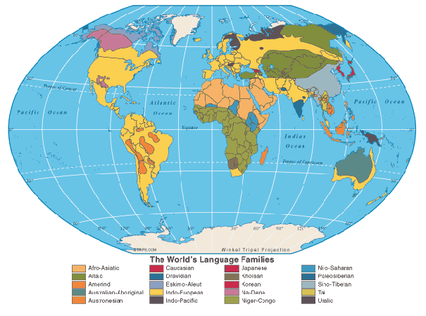
DEFINING LANGUAGE
Languages relate to each other in much the same way that family groups (think of a family tree) relate to each other. Language is a system of communication that provides meaning to a group of people through speech. Nearly all languages around the world have a literary tradition: a system of written communication. Most nations have an official language. Most citizens of a nation with an official language speak and write in that language. Additionally, most official or governmental documents, monetary funds, and transportation signs are communicated in the official language. However, some regions such as the European Union have 23 official languages. A language family is a collection of languages related through a common prehistorical language that makes up the main trunk of a language identity. A language tree will have language branches, a collection of languages related through a common ancestral language that existed thousands of years ago. Finally, a language group is a collection of languages within a single branch that share a common origin from the relatively recent past and display relatively few differences in grammar and vocabulary.
DIALECTS
There are various dialects within any language, and English in the United States is no exception. A dialect is a regional variation of a language, such as English, distinguished by distinctive vocabulary, spelling, and pronunciation. In the United States, there is a dialect difference between southern, northern, and western states. We can all understand each other, but the way we say things may sound accented or “weird” to others. There is also a dialect difference between American English and English spoken in Britain, as well as other parts of the British Commonwealth.
Origins and Diffusions
ORIGINS OF LANGUAGES
All modern languages originate from an ancient language. The origin of every language may never be known because many ancient languages existed and changed before the written record. Root words within languages are the best evidence that we have to indicate that languages originated from pre-written history. The possible geographic origin of ancient languages is quite interesting. For example, several languages have similar root words for winter and snow, but not for ocean. This indicates that the original language originated in an interior location away from the ocean. It wasn’t until people speaking this language migrated toward the ocean that the word ocean was added to the lexicon (a catalogue of a language’s words).
The video is from the famous Explorer-in-Residence of the National Geographic Society, the anthropologist Wade Davis. He has traveled all around the world and he brings back the knowledge and wisdom of exploring ancient cultures. Davis says humans all around the world try to understand what it means to be human and it is expressed 7,000 ways in the form of language. "The other cultures of the world are not failures to be us; rather, they show us what it means to be human." There are many layers within the Indo-European language family, but we will focus on the specifics. Though they sound very different, German and English come from the same Germanic branch of the Indo-European language group. The Germanic branch is divided into High German and Low German. Most Germans speak High German, whereas English, Danish, and Flemish are considered subgroups of Low German. The Romance branch originated 2,000 years ago and is derived from Latin. Today, the Romance languages are Spanish, Portuguese, French, and Italian. The Balto-Slavic branch use to be considered one large language called Slavic in the 7th Century, but subdivided into a variety of smaller groups over time. Today the Balto-Slavic branch is composed of the following groups: East Slavic, West, Slavic, South Slavic, and Baltic. The Indo-European language branch spoken by most people around the world is Indo-Iranian with over 100 individual languages.
DISTRIBUTION OF LANGUAGE FAMILIES
The next question that must be asked is why are languages diffused where they are diffused? Social scientists, specifically linguistics and archaeologists disagree on this issue because some believe that languages are diffused by war and conquest, whereas others believe diffusion occurs by peaceful/symbiotic means such as food and trade. For example, English is spoken by over 2 billion people and is the dominant language in 55 countries. Much of this diffusion has to do with British imperialism. The primary purpose of British imperialism was to appropriate as much foreign territory as possible to use as sources of raw materials. Imperialism involves diffusion of language through both conquest and trade.
The linguistic structure of the Sino-Tibetan language family is very complex and different from the Indo-European language family. Unlike European languages, the Sino-Tibetan language is based on hundreds of one-syllable spoken words. The other distinctive characteristic of this language is the way it is written. Rather than letters used in the Indo-European language, the Chinese language is written using thousands of characters called ideograms, which represent ideas or concepts rather than sounds. Sino-Tibetan language family exists mainly in China—the most populous nation in the world—and is over 4,000 years old. Of the over 1 billion Chinese citizens, 75 percent speak Mandarin, making it the most common language used in the world. There are a large variety of other language families in Eastern and Southeast Asian. There is Austronesian in Indonesia, Austro-Asiatic that includes Vietnamese, Tai Kadai that is spoken in Thailand and surrounding countries, Korean and Japanese. In Southwest Asia (also called the Middle East), there are three major language families.
The Afro-Asiatic languages are spoken by over 200 million people in several countries in the form of Arabic and is the written language of the Muslim holy book called the Quran. Hebrew is another Afro-Asiatic language and is the language of the Torah and Talmud (Jewish sacred texts). The largest group of the Altaic language family is Turkish. The Turkish language use to be written with Arabic letters, but in 1928 the Turkish government required the use of the Roman alphabet in order to adapt the nation’s cultural and economic communications to those in line with their Western-European counterparts. Finally, the Uralic language family originated 7,000 years ago, near the Ural mountains in Siberia. All European countries speak Indo-European languages except Estonia, Finland, and Hungary, which speak Uralic instead. The countries that make up Africa have a very rich and complex family of languages. Africa has thousands of languages that have resulted from 5,000 years of isolation between the various tribes. Just like species that evolve differently over thousands of years of isolation, Africa’s languages have evolved into various tongues. But there are three major African language families to focus on. The Niger-Congo language family is spoken by 95 percent of the people in sub-Saharan Africa. Within the Niger-Congo language is Swahili, which is the official language of only 800,00 people, but a secondary language spoken by over 30 million Africans. Only a few million people in Africa speak languages from the Nilo-Saharan language family. The Khoisan language family is spoken by even fewer, but is distinctive because of the "clicking sounds" when spoken. In a world dominated by communication, globalization, science and the Internet, English has grown to be the dominant global language. Today English is considered a lingua franca (a language mutually understood and commonly used in trade by people who have different native languages). It is now believed that 500 million people speak English as a second language. There are other lingua franca such as Swahili in Eastern Africa and Russian in nations that were once a part of the Soviet Union.
PIDGINS AND CREOLES
Pidgins, also called contact languages, which develop out of contact between at least two groups of people who do not share a common language. A pidgin language is a usually a mixture of two or more languages, contains simplified grammar and vocabulary in, and is used for linguistic communication between groups, usually for trading purposes, who speak different languages. Pidgins are not first/native languages and are always learned as a second language. Many pidgins developed during European colonization of Asia, Africa, and other areas of the world during the seventeenth to nineteenth centuries.
Creole languages are stable languages that develop from pidgins. Different from pidgins, creole languages are primary languages that are nativized by children. Additionally, creoles have their own formal grammar and vocabulary. The grammar of a creole language often has grammatical features that differ from those of both parent languages. However, the vocabulary of a creole is primarily taken from the language of the dominant contact group.
ENDANGERED LANGUAGES AND PRESERVING LANGUAGE DIVERSITY
An isolated language is one that is unrelated to any other language, thus it cannot be connected to any language family. These remote languages, and many others, are experiencing a mass extinction and are quickly disappearing off the planet. In fact, it is believed that nearly 500 languages are in danger of being lost forever. Think about the language you speak, the knowledge and understanding acquired and discovered through that language. What would happen to all that knowledge if your language suddenly disappeared? Would all of it be transferred to another language or would major components be lost to time and be rewritten by history? What would happen to your culture if your language was lost to time? Ultimately, is it possible that the Information Age is causing a Dis-information Age as thousands of languages are near extinction?
Consider the impact of language on culture, particularly religion. Most religions have some form of written or literary tradition or history, which allows for information to be transferred to future generations. But some religions are only transferred verbally and when that culture disappears (which is happening at a frightening rate), so does all of the knowledge and history of that culture.
Luckily, there is an effort to preserve many of the world’s languages before extinction occurs. Recently the National Geographic Society created a campaign called the Enduring Voices Project, which is focusing on bringing awareness and protecting many of the world’s endangered languages. In 2012, Google announced its own project to protect half of the world’s total languages–3,054 to be exact–called Endangered Languages. Please take a moment and study these two important projects

Origins and Diffusion of Religion
Our world’s cultural geography is very complex with language and religion as two cultural traits that contribute to the richness, diversity, and complexity of the human experience. Nowadays, the word “diversity” is gaining a great deal of attention as nations around the world are becoming more culturally, religiously, and linguistically complex and interconnected. Specifically in regards to religion, these important cultural institutions are no longer isolated in their place of origin, but have diffused into other realms and regions with their own religious history and cultural dominance. In some parts of the world, this has caused religious wars and persecution; in other regions it has help initiate cultural tolerance and respect for others.
These trends are in some ways the product of a history of migratory push and pull factors along with demographic change that have brought together peoples of diverse religious and even linguistic backgrounds. It is critical that people critically learn about diverse cultures by understanding important cultural traits, such as the ways we communicate and maintain spiritual beliefs. Geographers need to be aware that even though our discipline might not be able to answer numerous questions related to language structure or address distinctive aspects of theological opinion, our field can provide insight by studying these cultural traits in a spatial context. In essence, geography provides us the necessary tools to understand the spread of cultural traits and the role of geographic factors, both physical and cultural, in that process. People will then see that geography has influenced the distribution and diffusion of differing ideologies, as well as the diverse ways they practice their spiritual traditions.
As is the case with languages, geographers have a method of classifying religions so people can better understand the geographic diffusion of belief systems. Although religions are by themselves complex cultural institutions, the basic method for categorizing them is simple. In essence, there are two main groups: universalizing religions, which actively invite non-members to join them, and ethnic religions, which are associated with particular ethnic or national groups. Everyone can recount moments in his or her life in which there was interaction with individuals eager to share with others their spiritual beliefs and traditions. Also, that same person might have encountered individuals who are very private, perhaps secretive, when it comes to personal religious traditions deemed by this individual as exclusive to his or her family and national group. A discussion of these life experiences can generate very interesting examples that serve as testimony to our world’s cultural richness when it comes to differing religious traditions.
ORIGINS AND WORLD RELIGIONS
A significant portion of the world’s universalizing religions have a precise hearth, or place of origin. This designation is based on events in the life of a man, and the hearths where the largest universalizing religions originated are all in Asia. Of course, not all religions are from Asia, and you can open up a discussion of the origins of other faiths outside Asia. The three universalizing religions diffused from specific hearths, or places of origin, to other regions of the world. The hearths where each of these three largest universalizing religions originated are based on the events in the lives of key individuals within each religion. Together, Christianity, Islam, and Buddhism have over 2.5 billion adherents combined. Below are links to websites that analyze the diffusion of Christianity, Islam, and Buddhism.
RELIGIOUS CONFLICT
Religion is often times the catalyst of conflict between local values or traditions with issues and values that come with nationalism or even globalization. Religion tends to represent core beliefs that represent cultural values and identity, which along with language, often times represent local ideology rather than national or international ideology. There are a number of reasons why, but some include:
- Culture is often the manifestation of core belief systems determined by the interplay between language and religion.
- Universal religions try to appeal to the many, whereas ethnic religions focus on the few in a specific region.
- Cultural landscapes or language and religion are often represented in the physical landscape. When opposing forces come and threaten the physical landscape, it threatens the cultural landscape.
- Universal religions require adoption of values that make conflict with local traditions and values. If the universal religion is forced upon another universal religion or ethnic religion, conflict may ensue.
- Migrants tend to learn and simulate the language of the region they migrate to, but keep the religion they originated from. This can be viewed as a threat to the people the migrant moved to.
Types of Religions
UNIVERSAL RELIGIONS
Most of you probably have not thought of religion in this sense, but geographers distinguish religion into two categories: universal and ethnic. Universal religions try to appeal to everyone globally rather than specific cultures or regions. Ethnic religions try to focus and appeal to specific groups of people. Sixty two percent of the world’s population belongs to a universal religion, whereas only 24 percent belong to ethnic religions. The other 14 percent do not have any religious affiliation.
Christianity is divided into three branches: Roman Catholic, Protestant, and Eastern Orthodox. The largest of the three is Roman Catholic with nearly 52 percent of the Christian population. In the western hemisphere, where nearly 90 percent of the population is Christian, there are strong divides between the Christian branches. In Latin America, 93 percent are Roman Catholic compared to just 29 percent in North America. In the United States, Roman Catholics are clustered in the southwest and northeast. Nearly 28 percent of North America is Protestant with Baptist being the major denomination followed by Methodist, Pentecostal, Lutheran, and Mormon. Most major religions have laws, rules, commandments, or beliefs that all members should follow. In Christianity, they are the Ten Commandments and they are written as direct commandments from God.
- You shall have no other gods before Me.
- You shall not make for yourself a carved image – any likeness of anything that is in heaven above, or that is in the earth beneath, or that is in the water under the earth.
- You shall not take the name of the LORD your God in vain.
- Remember the Sabbath day, to keep it holy.
- Honor your father and your mother.
- You shall not murder.
- You shall not commit adultery.
- You shall not steal.
- You shall not bear false witness against your neighbor.
- You shall not covet your neighbor’s house; you shall not covet your neighbor’s wife, nor his male servant, nor his female servant, nor his ox, nor his donkey, nor anything that is your neighbors.
Probably one of the most misunderstood religions in the world is Islam. Though predominantly centered in the Middle East and Northern Africa, Islam is the fastest growing religion in the world with 1.3 billion and is only second to Christianity is members. Founded by Muhammad, the core beliefs of Islam are called the Five Pillars of Faith and they include:
- There is no god worthy of worship except the one God, the source of all creation, and Muhammad is the messenger of God.
- Five times daily, a Muslim prays, facing the city Makkah (Mecca), as a direct link to God.
- A Muslim gives generously to charity, as an act of purification and growth.
- A Muslim fasts during the month of Ramadan, as an act of self-purification.
- If physically and financially able, a Muslim makes a pilgrimage to Makkah–this is called the Hajj.
- There is no god worthy of worship except the one God, the source of all creation, and Muhammad is the messenger of God.
- Five times daily, a Muslim prays, facing the city Makkah (Mecca), as a direct link to God.
- A Muslim gives generously to charity, as an act of purification and growth.
- A Muslim fasts during the month of Ramadan, as an act of self-purification.
- If physically and financially able, a Muslim makes a pilgrimage to Makkah–this is called the Hajj.
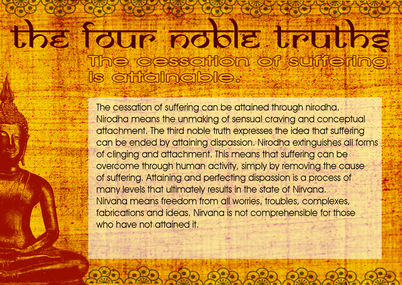
The third largest universal religion is Buddhism with 400 million followers. This religion is mainly clustered in China and Southeast Asia. Buddhism is actually a break-off of Hinduism and founded by Siddhartha Gautama. After seeing the suffering of people in India, Siddhartha left his riches to learn the root causes of pain and suffering. After a long journey, he became enlightened and became the Buddha. In order to transcend pain and suffering, the Buddha presented the Four Noble Truths, which leads to the Eight-fold Path.
- All living beings must endure suffering.
- Suffering, which is caused by a desire to live, leads to reincarnation (repeated rebirth in new bodies or forms of life).
- The goal of all existence is to escape from suffering and the endless cycle of reincarnation into Nirvana (a state of complete redemption), which is achieved through mental and moral self-purification.
- Nirvana is attained through an Eightfold Path, which includes rightness of belief, resolve, speech, action, livelihood, effort, thought, and mediation.
HOLY RELIGIOUS PLACES
Some of the places that in some ways contributed to the foundation and development of a faith oftentimes gain sacred status, either by the presence of a natural site ascribed as holy, or as the stage for miraculous events, or by some historical event such as the erection of a temple. When a place gains that “sacred” reputation, it is not unusual to see peoples from different parts of the world traveling or making a pilgrimage to this site with the hope of experiencing spiritual and physical renewal.
Buddhists have eight holy sites because they have special meaning or important events during the Buddha’s life. The first one is in Lumbini, Nepal where the Buddha was born around 563 B.C. The second holy site is in Bodh Gaya, Nepal, where it is believed Siddhartha reached enlightenment to become the Buddha. The third most important site is in Sarnath, India where he gave his first sermon. The fourth holiest site is Kusinagara, India where the Buddha died at the age of 80 and became enlightened. The other four holy sites are where Buddha performed/experienced specific miracles. People who practice Buddhism or Shintoism erect and use pagodas to house relics and sacred texts. Pagodas are also used for individual prayer and meditation.
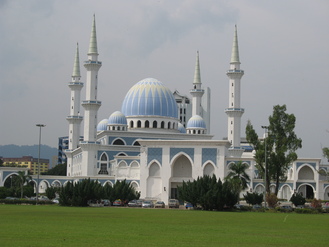
Islam’s holiest sites are located in Saudi Arabia. The holiest city is Mecca, Saudi Arabia where the Prophet Muhammad was born. It is also the location of the religion’s holiest objects called the Ka’ba, a cube-like structure believed to have been built by Abraham and Ishmael. The second holiest site to Muslims is Medina, Saudi Arabia where Muhammad began his leadership and gained original support by the people. Every healthy, and financially able Muslim is suppose to make at least one pilgrimage to Mecca in their lifetime. For Muslims, a mosque is considered a holy site of worship, but also a place for community assembly. Usually assembled around a courtyard, the pulpit faces Mecca so that all Muslims pray toward their holiest site. Mosques will have a tower called a minaret where someone summons people to worship.
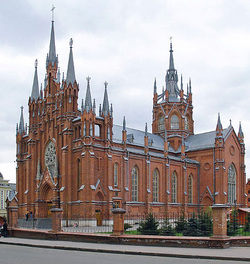
Meaning lord, master, or power, a Christian church is a place of gathering and worship. Compared to other religions, churches play a more important role because they are created to express values and principles. Churches also play a vital role to the landscape. In earlier days and in smaller towns, churches tend to be the largest buildings. Also because of their importance, Christian religions spend lots of money and commitment to the building and maintenance of their churches.
To learn more about various world religions, click on the following links:
Universal religions: Buddhism, Christianity, Islam Ethnic religions: Hinduism, Judaism, Taoism, Shinto, Zoroastrianism, Sikhism, Animists. Returning to our original discussion on genocide, below is a documentary by PBS on the subject titled "Genocide: Worse Than War." As quoted by Danial Goldhagen "By the most fundamental measure — the number of people killed — the perpetrators of mass murder since the beginning of the twentieth century have taken the lives of more people than have died in military conflict. So genocide is worse than war," reiterates Goldhagen. "This is a little-known fact that should be a central focus of international politics, because once you know it, the world, international politics, and what we need to do all begin to look substantially different from how they are typically conceived" (Genocide: Worse Than War).
Summary
Few things determine human characteristics than ethnicity and culture. Many believe that humans can be categorized by ethnicity and by race. But biological science is starting to show that race is more of a social construct and not grounded or supported by genetics.
For human geographers and sociologists, a culture is largely determined by language and religion. Language is a complex way humans have learned to communicate with each other. Like a family tree, the history of a language can be traced back using language branches and language families. Linguists are concerned that globalization is causing many of the world’s languages to become extinct. The extinction of a language is also the extinction of knowledge that may not be replaceable.
There are a variety of religions, but most can be divided as being either universal and ethnic. Universal religions tend to focus a lot on missionaries and the spread of their religion, whereas ethnic religions do not focus on spreading their religion. The places of worship are and complex and the religions themselves because they are the symbols of the religion.


